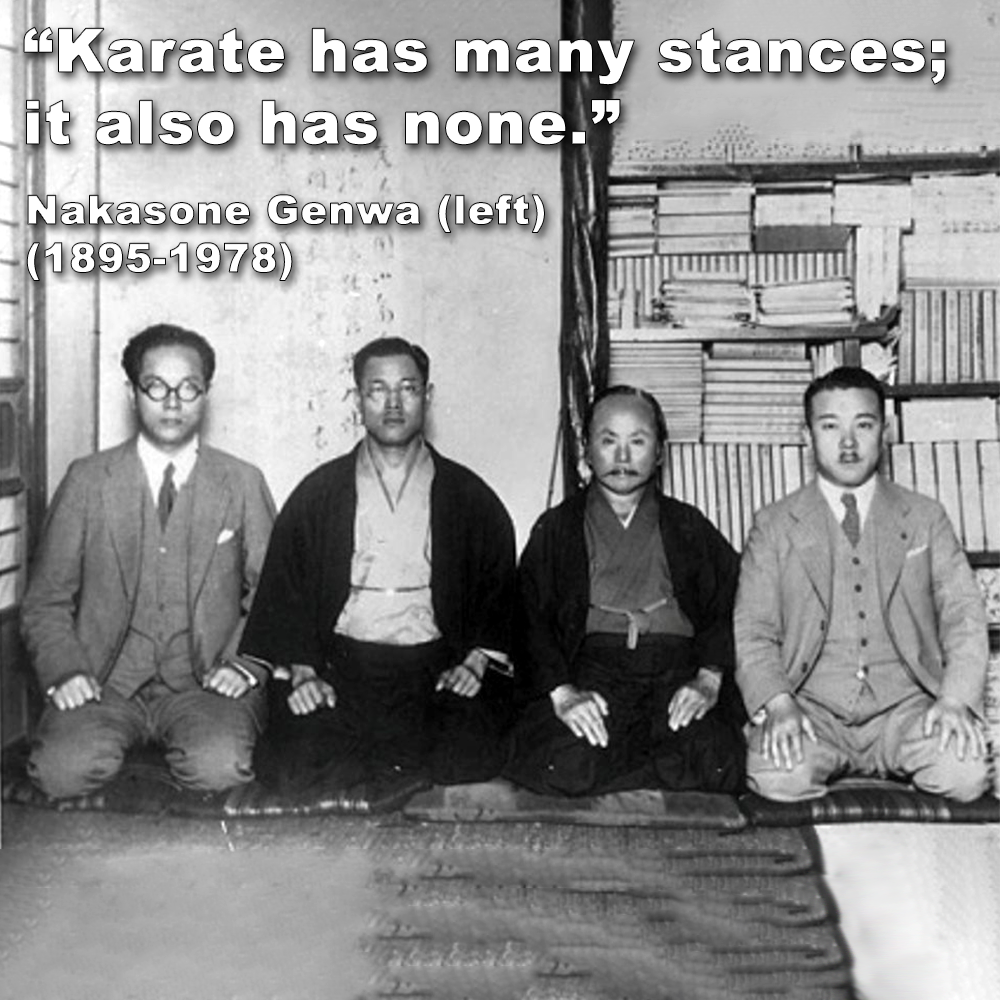
"Karate has many stances; it also has none." - Nakasone Genwa
Posted by ADAM CARTER on MAY 31, 2024

"Karate has many stances; it also has none." - Nakasone Genwa
(Approx 2 minute 10 second read)
Nakasone Genwa (1895-1978), once said, “Karate has many stances; it also has none.” This seemingly paradoxical statement highlights a crucial concept in training: stances are not rigid, fixed positions, but rather dynamic movements that serve a specific purpose.
In everyday English, we use the word ‘stance’ to infer a fixed, unchanging position or viewpoint. This common usage of the word can confuse people into thinking that we utilize ‘stances’ in the same way, that they represent a fixed position….. They do not!
Many dojo practices include preparing to meet an opponent in a fixed stance, holding a static ‘block.’ This is far from its actual function.
Stances are more like snapshots of movement. They should be seen as fluid transitions that guide proper weight distribution, balance, angles of attack, and efficient movement through techniques, and as ways to control an opponent’s position. Not just to facilitate strikes, kicks, or ‘blocks’ from a fixed position.
Unfortunately, stances are often practiced in a way that detaches them from their intended function.
Some instructors focus heavily on aesthetics and holding the ‘perfect’ stance for extended periods. Often cited as building leg strength, but prioritizing this over practical application can be counterproductive.
The methods of training that you use should never overshadow its original intent. Stances are meant to be flowed through, imagine them as stepping stones, guiding you from one technique, or movement to the next.
The emphasis on performing static stances can severely hinder your movement and adaptation. Imagine being stuck in a deep stance during a fight – it wouldn’t be very effective would it?
Beginners of course benefit from focusing on stances as ‘snapshots’ to grasp the fundamentals of body position and balance. However, as they progress, this focus should shift towards flowing through stances to generate power, create dominant positions, and adapt to changing situations.
Funakoshi Gichin, stated, “Beginners must master low stance and posture, natural body positions are for the advanced.” This emphasizes the importance of mastering stances in the early stages to develop a strong foundation.
However, the ultimate goal is to move beyond these initial positions and achieve a more natural, fluid flow and unrestricted movement.
Karate has many stances beyond what they may initially appear to be, offering us other crucial functions too. As an example; they can be used to limit your opponent’s movement, like stepping behind your opponent’s leg, to trip, destabilize, or throw, and to restrict their ability to move freely.
While it’s often said, “If you want to have good kicks, have good stances,” this holds true to some extent. In a self-protection scenario, the kicks often practiced in set ‘kumite’ or sparring may not be advisable or practical for everyone. You certainly don’t want a fixed or rigid stance, as this can hinder your ability to adapt and respond effectively in real-time situations.
While stances can help develop athletic attributes, that is not their primary function.
Stances are not static poses meant to ensure your feet are placed6 inch-perfect, or to build muscles in your legs. Rather, they are stepping stones towards fluid movement, allowing you to gain an advantage and facilitate efficient technique.
Photo Credit: Picture of (L-R) Nakasone Genwa, Chitose Tsuyoshi, Funakoshi Gichin and Konishi Yasuhiro
